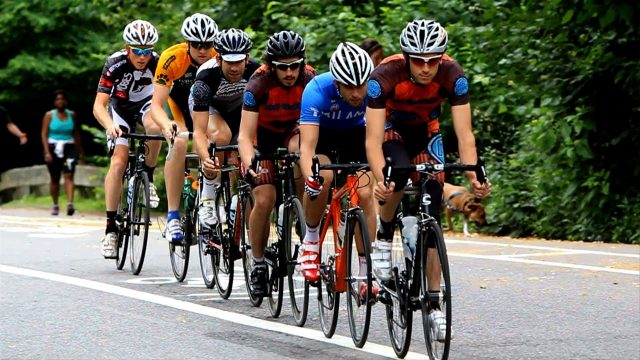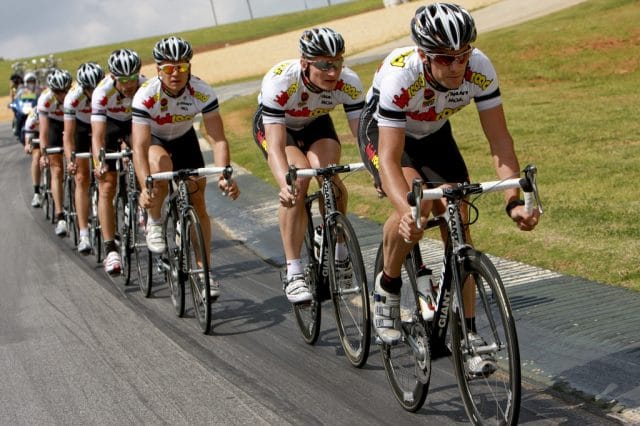10 Steps to Mastering the Art of the Paceline
Increasing your paceline skills will help you ride faster, and with less effort. Here's how.
Increasing your paceline skills will help you ride faster, and with less effort. Here’s how. – By Jason Sumner

While on a group ride or in a race, sharing the pace with others allows you to ride faster and with less effort. But it does take some practice, and the keys are working together, building trust, and paying attention.
At the elite level, pacelines become art forms. Riders move like a squadron of fighter pilots in a constantly flowing rhythm. Recreational riders may not be as graceful, but they can certainly enjoy the benefits of riding in a paceline, too. In a century ride, riding in a group will allow you to finish faster and fresher. Busting a headwind isn’t much fun alone, but with a few others to help, the kilometres pass quickly. If you’re new to pacelines or would like to get better at riding in one, these tips should help take you to the next level.
First, there’s the form: Rotating pacelines contain two lines of riders side by side, continuously in motion. This motion is achieved by one line going slightly faster than the other. Let’s say that you’re the lead rider in the faster line. You should cross over to the slow line after passing the front wheel of the rider beside you. Then you drift back with the others in the slow line. When the final position is reached at the back of the line, you drop in behind the back wheel of the last rider in the fast line (see tips to follow). When done right, this formation looks like a constantly rotating elliptical chain.
If you’re confused, gather several friends and walk through the fundamentals in your living room. Try a single paceline first. Lead for 10 seconds, then pull off either to the right or left, then slide to the back of the line. Stay close enough to bump elbows, then move in behind the last person. Now try the double paceline. Form two lines, side by side. March up the faster line, pull over to the front of the slower line, then drop back with it. Practice both clockwise and counterclockwise rotations.
Finally, go one step further and adjust for a crosswind. Wind direction determines which way to pull off. You always want to move into a crosswind. This way the advancing line, which is already working harder, gets some protection from the wind. In strong crosswinds riders become offset like geese on the wing. They also overlap wheels, which means a mistake can take down the whole bunch. The width of this type of paceline typically requires a completely traffic-free road.
READ MORE ON: road Skills training programmes


